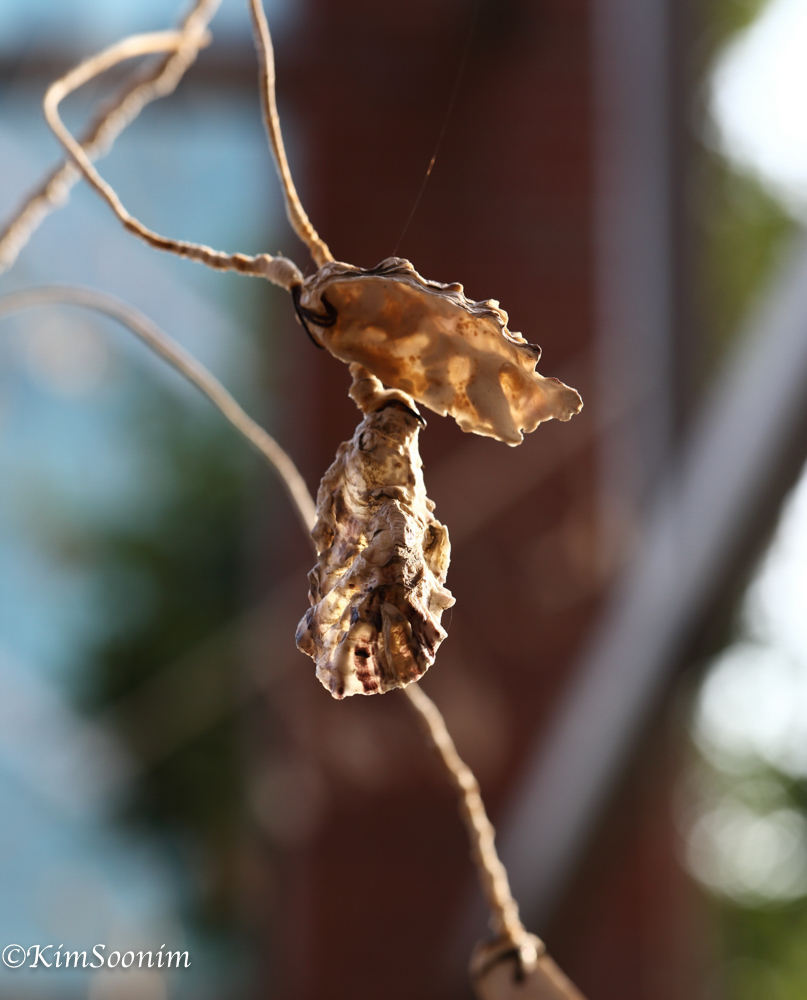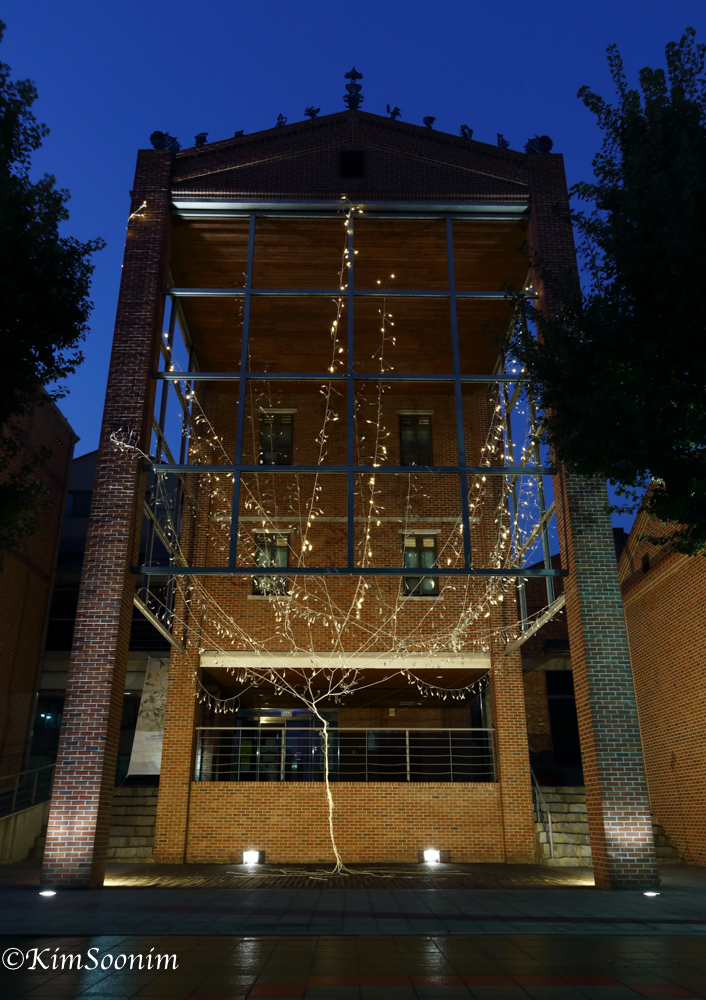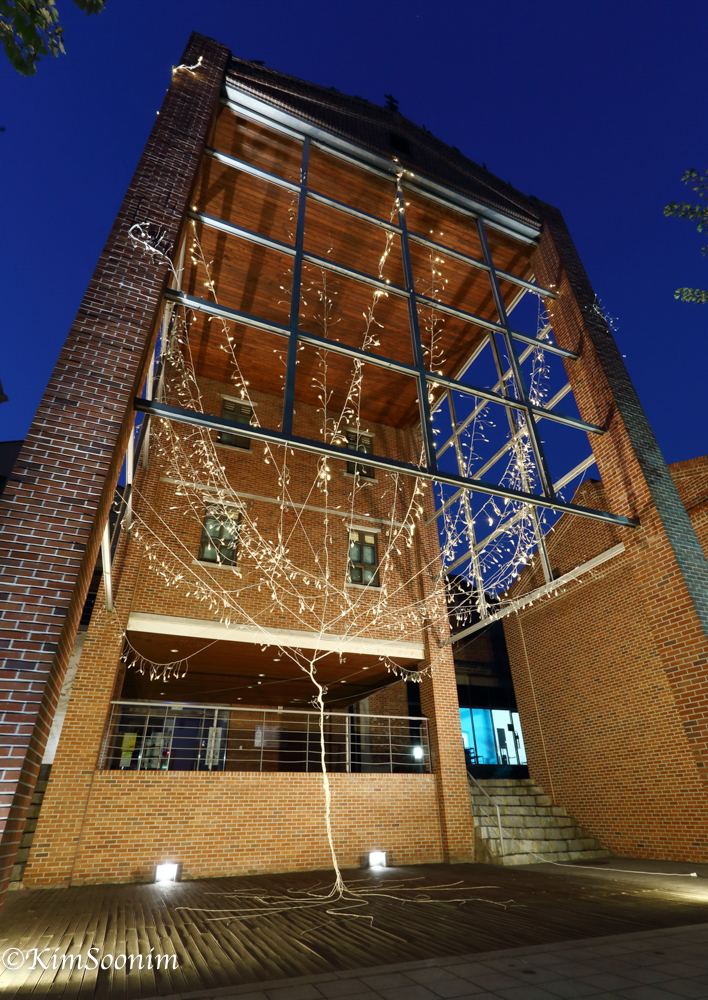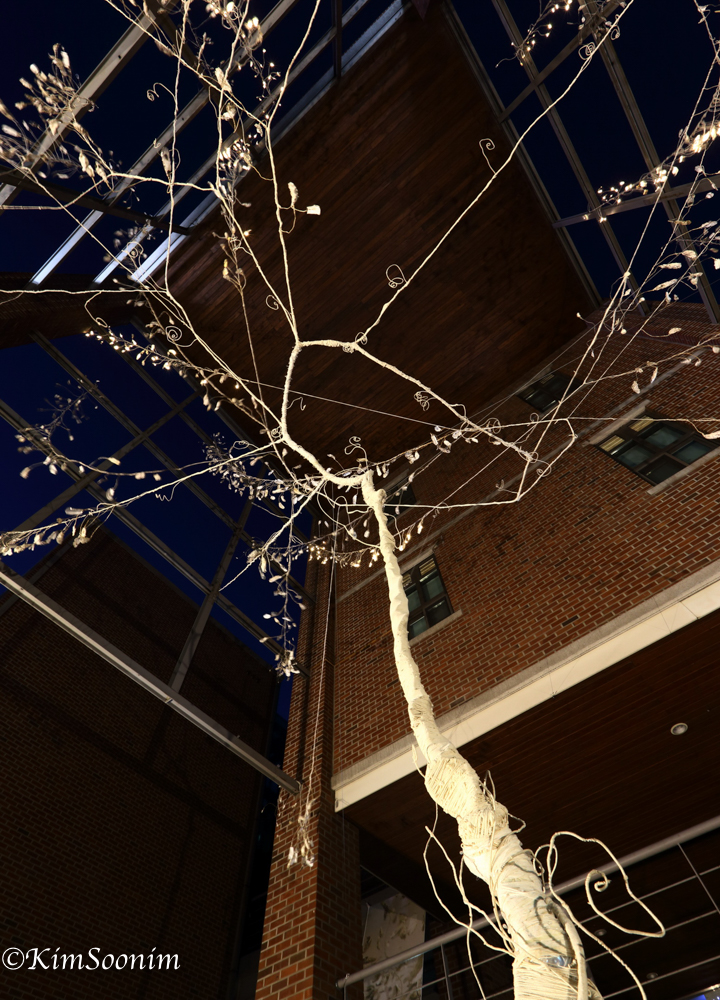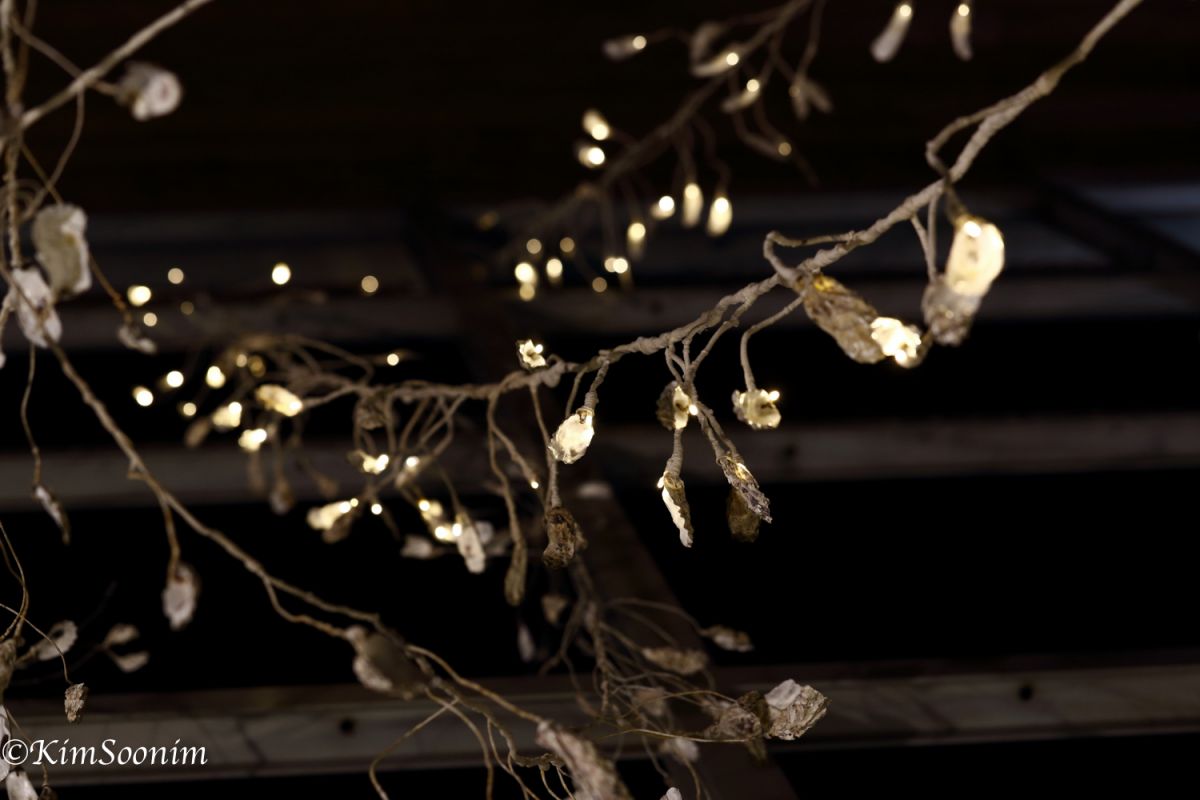sitespecific
땅이 된 바다_ 굴 땅 Landed Ocean _ Oyster Land
H12mx W7m x D6m 공간에 가변설치, 만석동 굴껍질, 무명실, 와이어, Led 미광, 모션센서, 2016
variable installation on H12mx W7m x D6m space, Oyster shells from Mansukdong Incheon, cotton threads, wire, Led Light, motion sensor, 2016
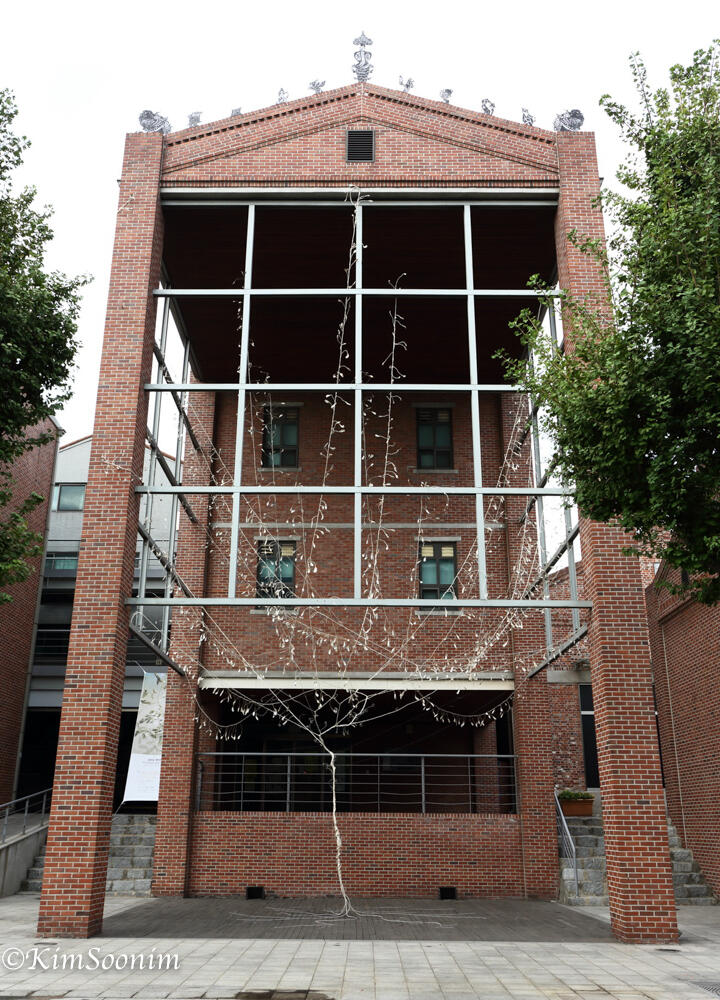
About My show, Landed Ocean, it's made by Oysters from this aria.
Those who had come into the sea empty-handed and saved their family by hardening the ground and setting up their dwellings
The sea that has willingly allowed them to settle
The town that was a sea
The houses that were a sea
The streets that were a sea
People that were a sea
The sea’s dream hidden behind an invisible land while settling for a while
The tale of the sea that has allowed people to occupy it
And, their stories
Migrants without their own land who lived by the seaside while surviving and feeding their families with oysters offered by the sea. A huge pile of oyster shells that are abandoned and stacked like a mountain ------ An oyster shell, which was a dwelling for one creature, is used by another creature (humans). Humans built their dwellings on the land reclaimed with oyster shells. The land reclaimed with oyster shells was gradually widened, and many do not know this land was originally part of the sea. This work suggests there is the sea, which allowed men or oysters to live here, an invisible site. This installation work is a representation of labor and survival blossoming like a dream and growing like a vine.
When on a field trip to Manseok-dong, Incheon in the winter of 2015 for our art museum’s inaugural exhibition (Between House and House, Space ADO), I had an opportunity to look into the facets of this area and those living there. Residents in Manseok-dong, Incheon are living a very simple, frugal lifestyle. Only oyster shells and briquette ashes are abandoned here. The abandoned oyster shells are used to reclaim the land. Those shells were used to fill the land on which we are standing now. Oyster Land takes note of stories of the land springing from the harsh lives of those living on the seaside of Incheon as well as stories of oysters used as a means of living, residents who live in the land reclaimed with those oyster shells, and the sea that allowed people to survive.
빈손으로 바다에게 와
땅을 짓고 집을 세워 가족을 지킨 사람들
그들을 위해 기꺼이 정착해준 바다.
바다였던 도시
바다였던 집들
바다였던 길
바다였던 사람들
잠시 정주하지만, 보이지 않는 땅 속에 숨은 바다의 꿈
사람에게 자신을 내 준 바다 이야기
그리고 그런 사람의 이야기
/20160801 KimSoonim
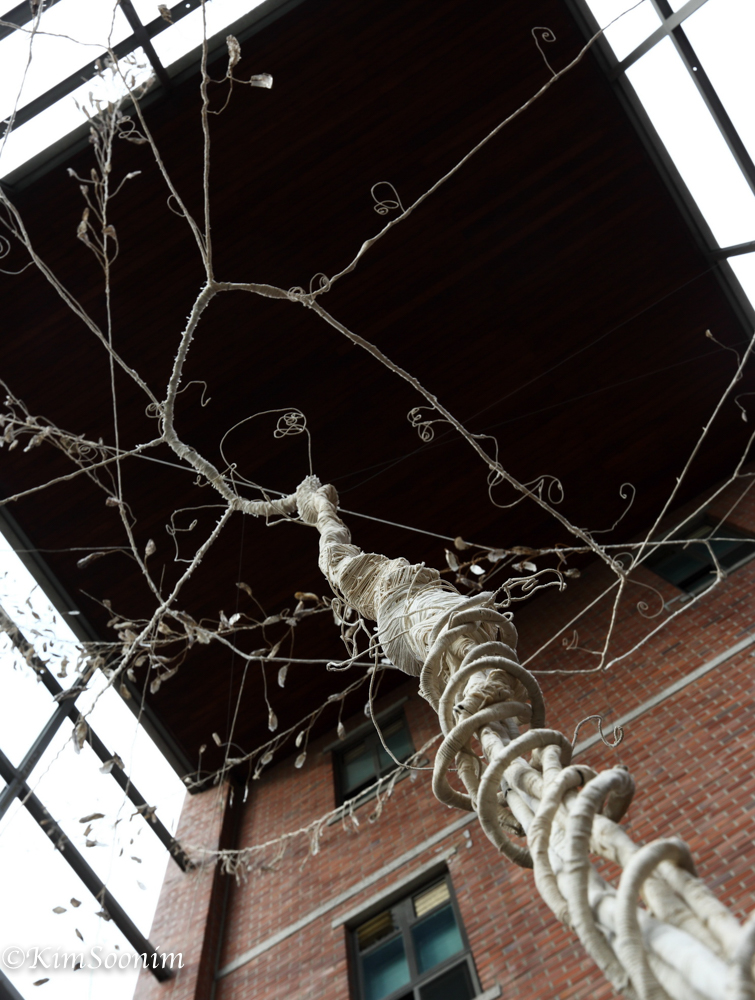
Landed Ocean
People who migrated to the coast, but did not own land, survived by collecting oysters from the sea, which they sold for their families and themselves so that they could continue living there for a long time. Empty oyster shells collect into a huge pile after they have been sold. Although they may have once served as shelters for sea creatures, in the end they are simply discarded by other organisms (humans). People fill up the entire beach with these shells, reclaim land from the sea, and build houses on top of the infill. The reclaimed land covered with oyster shells gradually expands, making it impossible to discern its original state as a ea containing these creatures that made it possible to live, and which now can only be found in hidden places. I sought to express the shape wherein labor and survival merge to bloom like dreams and grow like vines in an image of abundance.
When I conducted research for the opening exhibition at Woori Art Museum in Manseok-dong, Incheon (Space Between House and House, curated by Jung Sanghee) in Winter 2015, I took a close look into this area and the fragments of people’s lives here. Residents of Manseok-dong are very frugal. It can be said that the only things thrown away in this village are empty oyster shells and bouquet ashes. For a long time, oyster shells that were discarded even in this frugal neighborhood were piled up and used for land reclamation. They accumulated under the ground that we stand on today. Landed Ocean focuses on the story of land, following the history of human settlement on the shores of Incheon, the oysters that provide a means of living, the residents who live on reclaimed land covered with oyster shells, and the sea that offers itself to people.
On November 4, 2015, I was given four sacks of oyster shells by Ddakgu’s family in Manseok-dong. I cleaned them through a repetitive process of washing and drying, before planning the work’s form in March and April 2016. I perforated the oyster shells and finalized an installation site at Incheon Art Platform in May. From June to July, I tested the materials’ durability outside by winding vines and stems with cotton thread. Then, I designed placement lighting and electric wiring, before finally formulating an installation model and installation plan. After working for ten days at the outdoor site, I finished installing the work on August 22, and on August 26, 2016 I opened my solo exhibition. The work was on display for 66 days until November 7, during which time I recorded every step of the production and removal process on video.
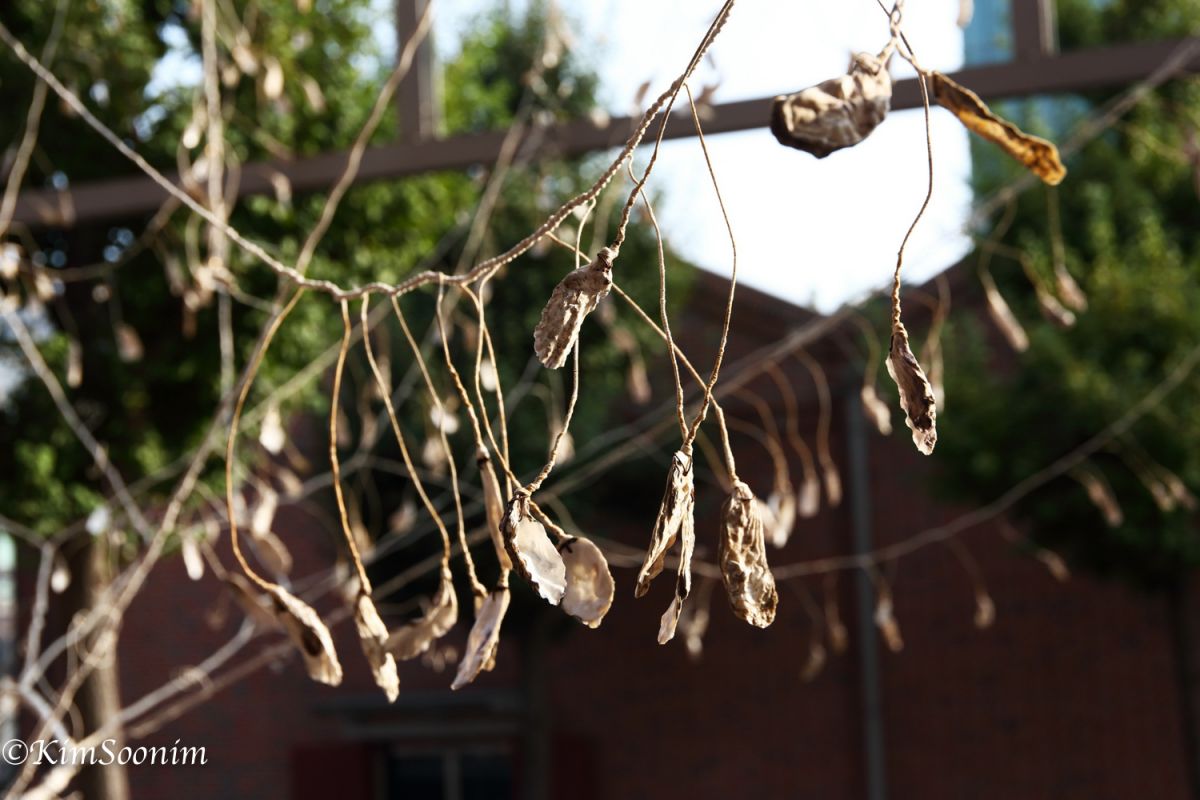
After arriving at the sea empty-handed, people modified the earth and built houses to protect their families.
The sea willingly offered itself to them as a settlement.
A city that was changed from the sea
Houses, roads, and people that were changed from the sea
The dream of the sea paused for a moment and then hid in the invisible ground
A story of the sea that offered itself to humans
And the story of these people.
(2021 한국예술경영센터 도록번역지원프로그램에서 재번역함)
빈손으로 바다에게 와
땅을 짓고 집을 세워 가족을 지킨 사람들
그들을 위해 기꺼이 정착해준 바다.
바다였던 도시
바다였던 집들
바다였던 길
바다였던 사람들
잠시 정주하지만, 보이지 않는 땅 속에 숨은 바다의 꿈
사람에게 자신을 내어 준 바다 이야기
그리고 그런 사람들의 이야기
